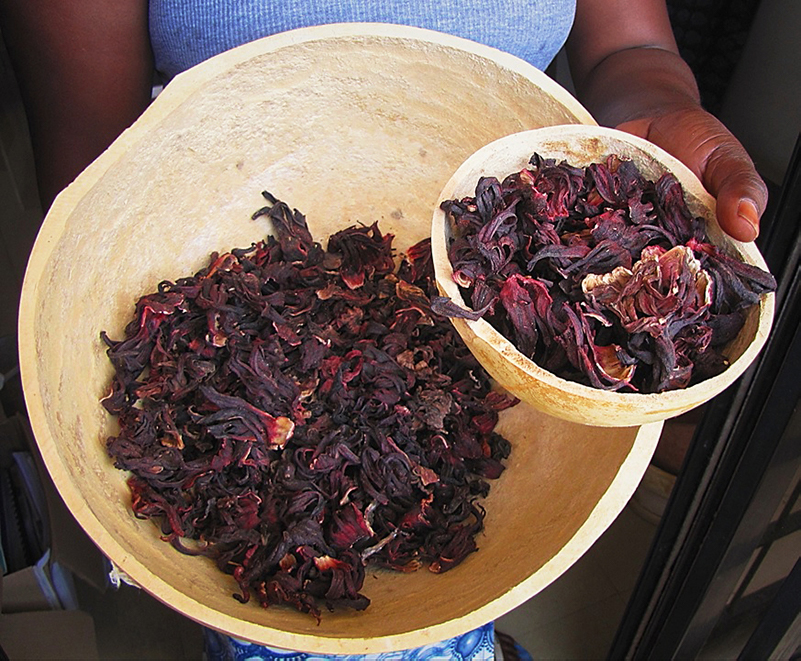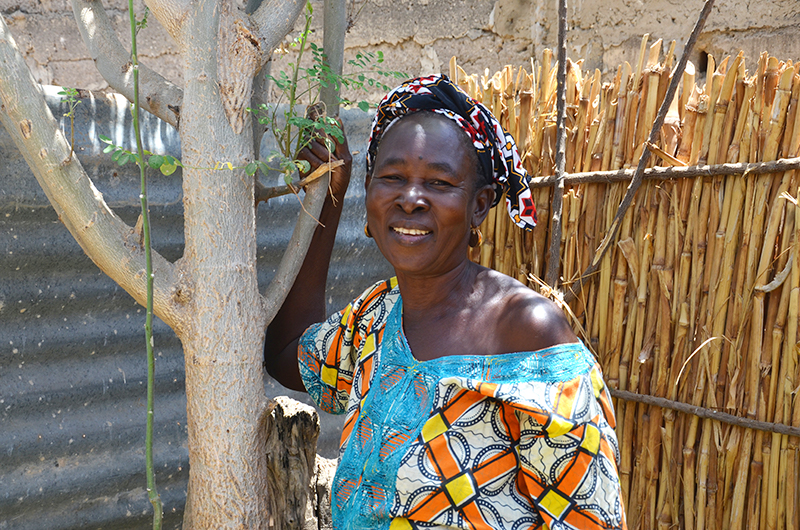CREATE! is about self-development and participation. Communities use the knowledge that our technicians teach as a foundation to develop self-sufficiency on their own. In fact, communities often go above and beyond utilizing their new knowledge. Meet Fama Fall, a mother of six in the community of Thienaba who decided to develop her own garden project independently after training with CREATE!’s technicians.
Developing New Agricultural Knowledge
Throughout Thienaba’s partnership with CREATE!, Fama and other community members met with CREATE! technicians once a week. During these sessions, they learned advanced agriculture techniques for the desert climate and how to plan future gardening activities. Together with the technicians, Thienaba developed a productive, year-round community garden. These gardens not only improve the food security of the village but also provide women with a way to generate income by selling the excess vegetables in the market.
“Now, we can work in the village.”
Before Thienaba started a community garden, Fama says she sold peanuts during the short rainy season to generate income. The rainy season in Senegal lasts only 3-4 months during which communities will farm and produce crops to sell in the markets. Unfortunately, monoculture with crops such as peanuts left the soil damaged and stripped of many of the nutrients. For that reason, many people left their families and their communities in search of work in cities or even other countries. However, things changed for Thienaba when community members began cultivating a year-round garden. “Now, we can stay and work in the village,” Fama says.

Fama tends to the bissap (Hibiscus) that she is growing in her home garden.
Creating Her Home Garden Project
As a result, Fama took her new knowledge a step further by developing a small, personal garden project right outside her hut. “I am able to garden myself now, and as we can see, I have this small garden that I manage,” Fama says as she points to her plot of land. Here, she is currently growing Bissap (Hibiscus). Bissap contains antioxidants and has been found to reduce blood pressure. Senegalese women add bissap leaves to popular dishes such as ceebu jën and also brew the flowers into a sugary juice or tea.
Interested in trying a refreshing, traditional Senegalese drink during the summer heat? Find a recipe for Jus de Bissap below:
Jus de Bissap:
Ingredients:
• Two or three cups of dried hibiscus flowers
• One or two cups of sugar
• Optional flavorings: sprig of mint, ½ teaspoon vanilla extract, ½ teaspoon grated fresh ginger root, 1 teaspoon orange-flower water, ½ cup lemon juice, 1 cup pineapple or orange juice
Directions:
1. Briefly rinse the dried flowers in cool water
2. In a saucepan, heat two quarts of cold water. As soon as the water begins to boil, add the dried hibiscus leaves. Immediately remove from heat and let the flowers steep for ten minutes.
3. Pour the water from the pot into a pitcher using a strainer to separate the flowers from the water. Be sure not to pour any of the flower sediment into the pitcher. Stir in the sugar. Add any other flavorings, if desired.
4. Finally, add ice and chill completely. May be served over ice.
The juice can be prepared double strength, by using only half as much water. The resulting Jus de Bissap can be mixed with seltzer water, ginger ale, or lemon-lime soda. Jus de Bissap can also be mixed in cocktails.

Dried Bissap leaves. (Photo by T.K. Naliaka)

